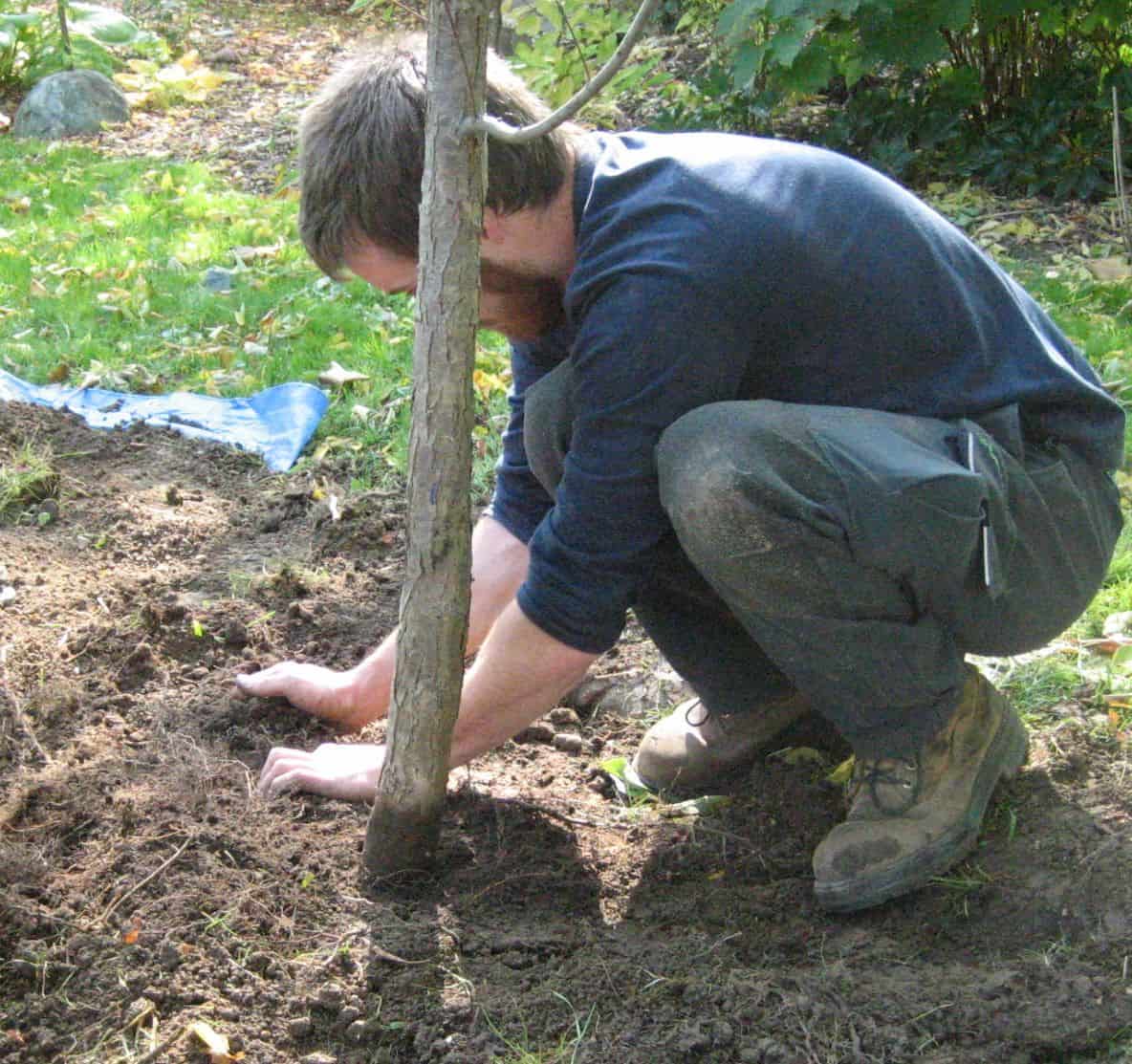
Much has been written about how to plant a tree: dig a proper hole for trees that’s at least twice the diameter of the rootball and don’t amend the soil. Mulch is good. Using a weed whacker near the trunk is bad. What’s often overlooked is how important it is to plant a tree at the right depth.
A tree is planted too deeply if the bottom section of the trunk where it begins to widen — called the trunk flare — is below soil level. Two problems arise when this happens: roots begin to grow up and around the base of the trunk that’s underground, girdling the trunk and preventing it from widening. Secondly, if the trunk flare is below soil level, it can’t do its job, which is to stabilize and anchor the tree to the site. A tree needs this support to thrive and live a long time. Without it, a tree is vulnerable in strong winds. (Incidentally, staking may hinder the development of trunk flare, too. See Just say no to tree staking.)
When shopping for a tree or planting a new one, look for a slight flare at the trunk’s base and keep this above ground level at planting time. Dig the hole not much deeper than the rootball so it doesn’t settle deeper after planting. If you don’t see the flare on a tree you’ve purchased, gradually scratch away the top surface of the rootball until it’s exposed. Sometimes nurseries aren’t careful when moving a freshly dug tree into a container and the flare gets covered.
The photo on the right shows a dark section at the bottom of a young katsura tree that was planted too deeply. It had struggled for about four years before it was replanted at the proper depth. After digging it up (maintaining as wide a rootball as two young men could lift), the top few inches of soil were carefully removed. The tree was replanted about four inches (10 cm) higher. A few feeder roots were lost in the process, but the tree has a good chance of survival and long-term health.
This katsura needed to be replanted. It was planted too deeply, and the tree never got established. Note the ring of dark trunk at the base, showing how much of the trunk was buried underground.

Very glad I had this article. I planted a pear tree and I was mindful of not planting it too deeply so that the rootstock (the joint) was above ground. But three years later, it has sunk in so much that it’s buried in the soil. Now I have to replant it so it can sit few inches above the soil surface. Can I replant it in the spring when the tree is going to be coming out of dormancy or should I wait till later in the summer?
Thanks.
My advice would be to reposition it this spring, before leaves bud out (just coming out of dormancy). Would anyone else on the site have a recommendation?
Hi Beckie,
Trees are best dug up and repositioned when they are dormant. Trees should also be planted so the root flare is just visible (the trunk should not look like a telephone pole). If you wait until the tree is dormant it is easier on the tree.